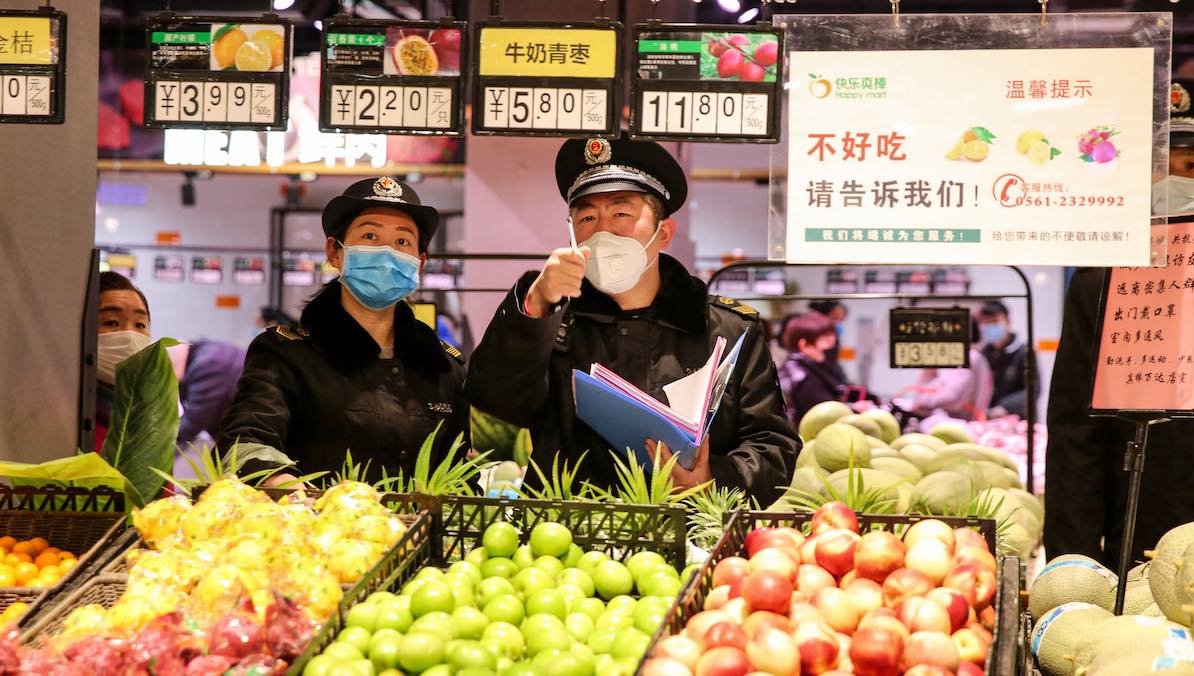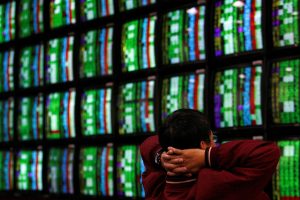Nearly 2,700 people have died and close to 80,000 have been infected. In China, the Covid-19 outbreak has scythed through the country, closed down economic activity and left up to half of the 1.4 billion population in some form of quarantine.
But then, the scale of the global spread of the coronavirus epidemic has been frightening since it was first detected in Wuhan more than two months ago.
For the world’s second-largest economy, the fallout could be just as disastrous, plunging the nation into a scenario of mass unemployment.
“No job means no income and no wealth creation.
Every effort must be made to prevent massive layoffs,” Premier Li Keqiang told an executive meeting of the State Council last week.
Already millions of small businesses in China are tittering on the brink, threatening “social stability.”
Painting a picture of industrial chaos, Huang Qifan, the vice-chairman of the National People’s Congress Financial and Economic Affairs Committee, has warned that the impact of the Covid-19 disease was “scarier than the epidemic itself.”
“If measures are not taken, a large number of small and medium-sized manufacturing enterprises will fail. Just as importantly, the industrial ecology of some of the more fragile manufacturing industries will be destroyed, leading to longer-term negative effects,” Huang, the former mayor of Chongqing, wrote on the Chinese-language Sina Finance website.
But manufacturing is not the only area of concern. Huang also highlighted the highly vulnerable service sector. “Consumption in hotels and cinemas has fallen sharply while a large number of small and medium-sized enterprises are under extreme pressure as a result,” he said.
“For example, China’s tourism industry contributed slightly more than 11% to GDP in 2017. The number of direct and indirect people employed in the industry exceeds 100 million. If the sector is severely hit this time, unemployment will rise, increasing pressure on social stability across the whole of society,” Huang added.
Even though Beijing has moved quickly to roll out a substantial stimulus package, more liquidity will be needed to avoid the specter of countrywide layoffs.
A survey released by the prestigious Tsinghua University and Peking University of 1,000 small and medium-sized companies illustrated the depth of the problem.
Just 34% revealed they could survive for a month on current cashflow while more than a third of those polled said they could last for two months. While the sample was small, the study was conducted by China’s two leading academic institutions.
It also fits into Premier Li’s statement last week.
“We must make employment a first-order priority in maintaining stability in the six key areas, namely, employment, finance, foreign trade, foreign investment, domestic investment and expectation. Sub-national governments must meet their responsibilities to keep employment stable,” he said.
“The return of rural migrant workers should be well organized. Sound and practical epidemic control guidelines for different categories of enterprises should be promptly formulated to guide local authorities for the resumption of work and production in their jurisdictions,” he added.
In its quarterly monetary policy briefing, the People’s Bank of China announced that “preventing and curbing” the outbreak was the “most significant task,” and that the PBOC would continue to strengthen monetary and credit support.
The de facto central bank reported last week that yuan loans in January hit a high of 3.34 trillion yuan (US$476.3 billion), which was double December’s number.
Aggregate financing growth, a broader measure of the real economy including local government bonds, jumped to 5.07 trillion yuan during the same period compared with December’s “unprecedented high” of 2.1 trillion yuan, according to the PBOC.
Shoring up the business environment and ring-fencing jobs have become pivotal to the central bank’s policy.
“The employment situation is OK in the first quarter, but if the virus is not contained by the end-March, then from the second quarter, we’ll see a big round of lay-offs,” Dan Wang, an analyst with the Economist Intelligence Unit, said, adding that unemployment could surge to 4.5 million.
The private sector accounts for around 80% of urban jobs and is a major driver in creating GDP growth.
As part of the relief effort, banks have so far “extended loans” worth “537 billion yuan,” or $76 billion, mostly in the past month. “This is a sizable amount given that total net new loans last February were 886 billion yuan,” Capital Economics, a research consultancy based in London, stated in a briefing.
Included in a raft of incentives are “delayed or partially waived taxes and social security fees for affected businesses,” DBS, the multinational bank in Singapore, pointed out.
Yet even before the Covid-19 outbreak, unemployment had started to move in the wrong direction. Official data showed that China’s jobless rate in December was 5.2% compared with 4.9% in April 2018.
In part, that was down to trade war tensions between Washington and Beijing before a phase one deal was hammered out in the fall of last year. But the aftershocks of the coronavirus epidemic have created a new climate of uncertainty.
“The Chinese government appears to be making a concerted effort to balance managing the virus by getting China back to work. Some provinces are reportedly removing checkpoints into manufacturing hubs and some are offering subsidies to members of China’s 300-million-strong migrant workforce to lure them back with the aim of getting the Chinese economy up to two-thirds capacity by the end of this month,” Chris Taylor, an associate partner with the Access Asia Group, a risk-management firm based in Singapore, told Asia Times.
“This may or may not be overly ambitious, depending on whether the virus continues to be largely contained to Hubei province or whether it unexpectedly surges elsewhere in China as appeared to be the case in Beijing on Friday [February 21], where an upsurge in cases in the city’s Xicheng District was reportedly leading to residential lockdowns. Overall, it’s safe to say that China is equally prioritizing viral containment and getting back to business, which can only be seen in a positive light however the situation ultimately plays out,” Taylor added.
Still, lingering economic traces of the coronavirus will live on long after the epidemic has faded from the headlines.
























